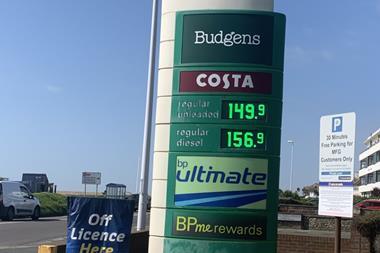Petrol and diesel rose by more than 2ppl in November, taking the average price of both fuels to a three-year high, according to the latest RAC Fuel Watch data.
A litre of unleaded petrol went up 2.35p from 118.43p to 120.78p, and diesel was up 2.22p from 120.96p to 123.18p.
The RAC Fuel Watch report for November also shows the price of petrol at the big four supermarkets increased by 2.37ppl from 114.91ppl to 117.28ppl, but diesel rose less than it did across all retailers – 1.72ppl compared with 2.22ppl – from 117.78ppl to 119.50ppl.
The report said pump prices have risen as a result of higher wholesale costs brought about by the increased price of oil, which was above $60 a barrel for the entire month. However, this was mitigated by the strengthening of the pound, which rose 2% from $1.32 at the start of November to $1.35 by the close.
The end of the month also saw the Organization of the Petroleum Exporting Countries (OPEC) meet in Vienna on 30 November to discuss the level of oil production among its 14 member nations. The organisation has been restricting production together with some non-members, such as Russia, with a view to keeping prices higher. The meeting concluded with the production cut being extended from its scheduled conclusion at the end of March to the close of 2018.
RAC fuel spokesman Simon Williams said: “The market had been expecting OPEC to extend its production cut until the end of next year so after an initial rise in the price of oil during the day of the meeting, things cooled down.
“Even though the oil price is now consistently above $60 a barrel, the increased value of sterling against the dollar is helping to keep fuel prices down at the pumps. This is good news for motorists as it means petrol and diesel prices are unlikely to shoot up, in fact we may even see them come down very slightly in the next week or so.
“The price we will pay for fuel at the pump into 2018 very much hinges on how effective OPEC’s production cut continues to be in reducing the global glut of crude oil. The increased barrel price this is designed to create may also work against the group as it makes fracking for oil in the US more financially viable, which in turn may lead to America increasing its production and filling the gap from the cuts. If this happens it should mean forecourt prices won’t go shooting up.”






























No comments yet